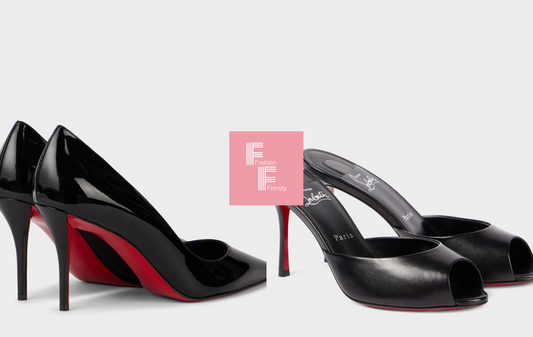Coloring your hair can be a delightful way to express yourself, but it often comes with risks. Particularly, damaged hair can lead to uneven color, brassy tones, or even chemical burns. If you've found yourself grappling with these issues after a coloring mishap, fear not - color correction treatments can rejuvenate your locks and restore the vibrant color you desire. Let's dive into the essentials of color correction for damaged hair.
Understanding Color Correction

Color correction is a process that neutralizes unwanted tones in your hair, helping to restore a more desirable hue. Whether it’s correcting brassiness, dark patches, or an overly vibrant shade, this process is vital for returning hair to its natural beauty. Understanding the color wheel is crucial; it helps distinguish complementary colors that can mitigate undesired tones. For instance, if your hair has taken on a yellowish tint, purple shampoos or toners can help tone it down.
The Importance of Hair Health

It's essential to note that before diving into color correction, your hair's health is a top priority. Damaged hair can be further exacerbated by aggressive chemical treatments. Before you start the color correction process, assess the condition of your hair. Is it brittle, overly dry, or prone to breakage? If that’s the case, you may want to consider deep conditioning treatments or protein treatments to strengthen your hair before any color will be applied. Not only does healthier hair provide a better canvas for color, but it also holds up better to the rigors of the correction process.
Preparing for Color Correction

Preparation is key when embarking on your color correction journey. Here’s a short checklist to help you get ready:
- Consultation: Always consult with a professional stylist. They can assess your hair and recommend the best course of treatment. Don’t hesitate to bring along inspiration photos of the desired outcome.
- Shampoo and Condition: Use a clarifying shampoo to remove any build-up and prepare your hair for color application. Follow up with a nourishing conditioner to help maintain moisture.
- Patch Test: If you’re using a new product or dye, do a patch test at least 48 hours before your correction appointment to avoid any allergic reactions.
- Treatment Plan: Discuss with your stylist a treatment plan that includes specific products needed for your hair type, considering its condition and color history.
The Color Correction Process
Once you're ready, your stylist will begin the color correction process, which typically involves one or several steps depending on the level of correction needed.
- Color Removal: If your hair color is dramatically different from what you want, your stylist might use a color remover. This safe approach helps strip away unwanted artificial color without further damaging the hair.
- Toning: After the removal, a toner might be applied to neutralize unwanted undertones. For example, if your hair turned brassy after a blonde dye job, a blue or purple toner can neutralize the yellow tones.
- Re-coloring: If you've faced severe damage, your stylist may recommend re-coloring your hair to a shade closer to your natural color. Always aim for higher quality dyes formulated with conditioning agents to minimize damage.
- Aftercare: This is where the magic happens. Post-color treatment care is crucial for maintaining your new color while improving your hair's overall health. Ensure to invest in sulfate-free shampoos and conditioners designed for color-treated hair to preserve vibrancy.
Aftercare Treatments
Post-correction care is equally vital for maintaining the health of your hair. Here are some ideal aftercare treatments to keep your locks looking luscious:
- Hydrating Masks: Use a hydrating hair mask once a week to provide your tresses with the moisture they need. Look for products with coconut oil, argan oil, or shea butter.
- Leave-in Conditioners: Incorporate a leave-in conditioner into your routine to protect your hair and add shine.
- Limit Heat Styling: Try to limit the use of heat styling tools for at least a few weeks after a color correction. When using heat, always apply a heat protectant.
- Regular Trims: Regular trims every 6-8 weeks help in removing split ends and keeping your hair healthy.
Professional vs. DIY

While the idea of color correction at home can be tempting, especially to save on costs, it's often best to leave this process to professionals. They have access to high-quality products and understand how to correct color effectively without causing excessive damage. However, if you choose to go the DIY route, ensure you do ample research, perhaps starting with less drastic fixes, such as conditioners and gloss treatments, that can add gloss and vibrancy without the commitment of permanent color.
When to Seek Help
If you find the damage to your hair is severe or the color correction attempts at home haven’t yielded your desired results, it’s wise to seek professional help. Sometimes, a single salon visit can straighten out what seems like an insurmountable problem. Professionals at salons are armed with the knowledge, skill, and resources to walk you through the healing process without further damaging your hair.
Final Thoughts
Ultimately, color correction can breathe life back into damaged hair, creating a beautiful and harmonious look. However, it's a journey that requires patience, education, and often, professional help. Remember, every step you take toward restoring your hair's health contributes not only to how you look but also to how you feel about yourself. Treat your locks with kindness, and they will reward you with softness, shine, and an irresistible vibrancy that elevates your personal style.











